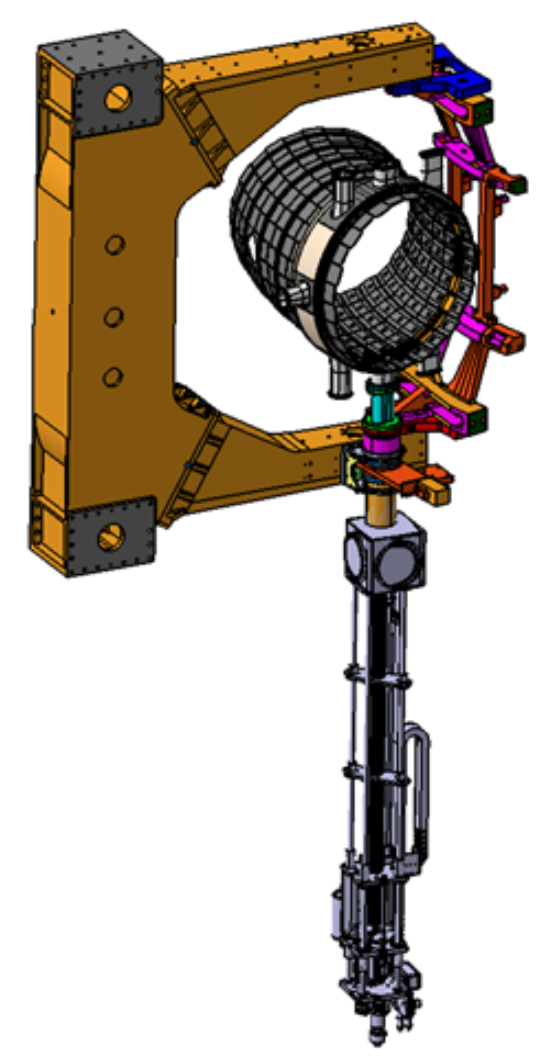RESEARCH UNIT: ISTP-Padova
WP LEADER: MATTEO ZUIN
The WP-3 will be devoted to the development of innovative tools for a significant improvement of the diagnostic capabilities for the RFX-mod2 experiment aimed at the characterization of the main dynamical properties of magnetically confined plasmas of thermonuclear interest, with particular focus on the edge region.
The diagnostic tools will include:
- Movable system of probes with Fast Reciprocating Manipulator (FaRM)
A reciprocating system will house system of sensors measuring magnetic field, electron density and temperature and plasma potential and flow fluctuation at different radial positions. The FaRM will be equipped with data acquisition with high sampling rate (up to 10MHz) and power supply systems. The diagnostics will allow to explore the radial peripheral region in the high plasma current regimes, not accessible up to now.
- High frequency magnetic probes system for the characterization of small-scale plasma instabilities
An electrically insulating support structure will house arrays of small-scale magnetic probes and antennas for wide band measurements (1kHz to 6GHz) of the electromagnetic plasma fluctuations. The system will be placed in different toroidal and poloidal positions along the in-vessel toroidal RFX-mod2 structure for simultaneous characterization of low and microwave electromagnetic frequency spectrum.
The WP activities will be mainly devoted to the development and the assembly of innovative diagnostic systems for a significant improvement of the diagnostic capabilities of the edge plasma for the RFX-mod2 experiment. The diagnostic systems will give information with high space and time resolution about the behavior in RFX-mod2 of a wide range of plasma parameters, including the electron density, temperature, plasma potential, atomic and/or molecular composition and plasma flow in a wide range of magnetic configurations, which span from the reversed-field pinch in both axisymmetric and helical equilibria to the circular and shaped tokamak.
Design, realization and validation of a movable system of probes with fast reciprocating manipulator (FarM)
The diagnostics will measure electrostatic and magnetic quantities with high time resolution and high space resolution along the toroidal, poloidal and radial directions. A fast reciprocating manipulator will be developed and exploited to avoid thermal damages. The activity includes the design, the procurement, the assembly and the verification of
- the mechanical system for fast reciprocation,
- complex arrays of electrostatic, magnetic and Mach probes,
- fast data acquisition system (frequency bandwidth up to 10MHz),
- power supplies for the electrostatic probes equipped with arc detection and prevention system.
Design, realization and validation of a high frequency magnetic probes system for the characterization of small-scale plasma instabilities
This include a system of in-vessel magnetic probes for the characterization of extremely small-scale magnetic fluctuations at the plasma edge made of clusters of small tri-axial magnetic coils distributed on close arrays and single coil antennas for the detection of the very high frequency component (up to 6GHz) of the magnetic spectrum.
The activity includes design, procurement, assembly and testing of:
- the mechanical components for the magnetic diagnostics (insulating case, mechanical support and electrical feedthrough),
- small-scale tri-axial sensor coils,
- fast acquisition system, including wide band spectrum-analyzers and RF analyzers based on SDR technology.
Design, realization and validation of a combined reflectometric system for real time plasma position control and edge plasma density profiles study
A new reflectometry system for plasma position control purposes will be developed, equipped with four bistatic ultrafast independent reflectometric units working in the frequency range (16–26.5 GHz), installed in four different poloidal locations. A combination of standard pyramidal horns and parabolic hoghorn reflectors will be used.
A significant improvement of the existing reflectometry system for the edge density profile analysis will be obtained by means of the installation of new reflectrometric units for fast full band frequency sweep.
Design, realization and validation of the acquisition system for the distributed electrostatic in-vessel probe sensors
The acquisition and power supply systems will be developed for in-vessel diagnostics, constituted by arrays of probes distributed along the vessel.
 English
English  Italiano
Italiano 
